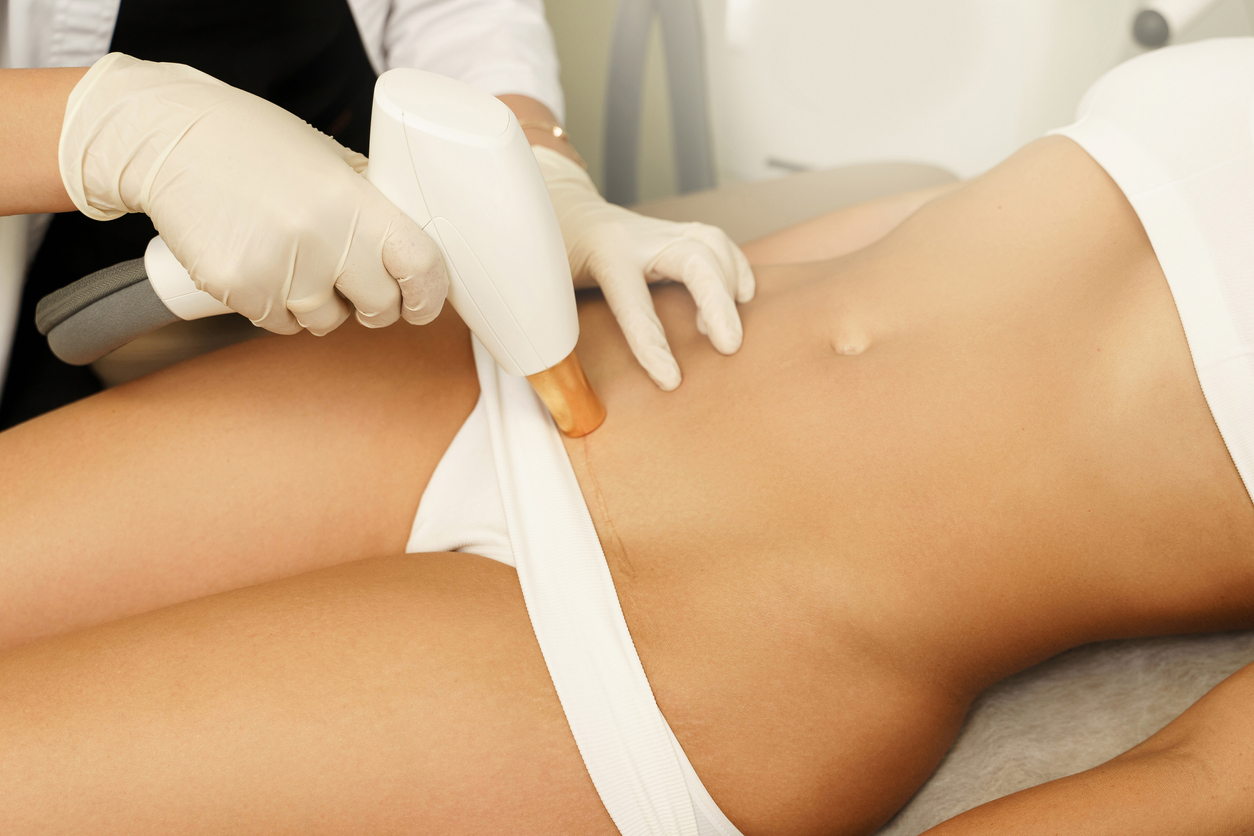Caring for Your C-section Scar: Treatments and the Healing Stages

Did you have a C-section or are you planning this type of delivery? You aren’t alone!
According to the U.S. Centers for Disease Control and Prevention (CDC), in 2021 there were 1,174,545 Cesarean section deliveries in the United States. This makes up just over 32 percent of all U.S. deliveries.
The Cleveland Clinic notes that these deliveries typically take about 45 minutes. Even though the delivery is usually over in less than an hour, from start to finish, the healing time isn’t as quick.
Related: Get the Facts: Top 5 Myths and Truths About C-Sections
Whether you have questions about scar tissue and the healing process or you just want to learn more about the ways to reduce the appearance of the leftover C-section incision, we’ve got all the deets new or soon-to-be new mamas need!
Types of C-section Scars and the Incision Site
There isn’t one universal scar or C-section incision that every new mother has after delivery. The common types of scars include the:
- Keloid scars – The keloid is a raised scar that spreads and grows larger than the original incision. Keloids often run in families. Between 33 and 50 percent of people affected by keloids have one or more family members with this type of scar, according to the American Academy of Dermatology (AAD).
- Hypertrophic scars – Also known as a raised scar, the hypertrophic scar can flatten over time. Some people experience itching or discomfort when these scars form.
Just like there are different types of Cesarean section scars, there are also different types of incisions. These include the:
- Low vertical incision – This vertical cut has a straight top-to-bottom line and is made in the lower abdomen or uterine region.
- Low transverse incision – The low transverse incision is a horizontal bikini cut that, as the name implies, is made to the low or lower uterine region under the belly button.
- High transverse incision – This horizontal incision is similar to the bikini cut. But instead of a lower uterine placement, the doctor will make this cut higher on the abdomen.
The type of Caesarean scar you have depends on the incision site and type of incision the OB makes.
What Are the Healing Process Stages of C-section Scars?
Scarring doesn’t happen overnight. It took almost nine months for your body to go from a pink line on the pregnancy test to a full-fledged mommy. While it may have taken mere minutes for the incision itself, the surgical procedure is not the end of your journey.
Even though there is a healing process that all people who have Cesarean sections go through, you are still an individual. This means you may heal at a different rate than another new mother.
After the surgical procedure, the doctor will need to close the incision. This includes more than just a squirt of surgical glue on the skin. The doctor will need to close your uterus and abdominal muscles with sutures or staples. Sutures used in this major surgery are sometimes dissolvable stitches.
1. The Inflammatory Stage
During the healing process, you may notice that the incision is going through stages that look at feel different. During the first 2 to 3 days after your C-section, the bleeding stops the incision site may look red or pink and swollen.
This is the inflammation stage. Your body promotes the inflammatory response around the wound to protect it from infection.
Many new mamas need to stay in the hospital for the first two to four days of the postpartum period, according to the Cleveland Clinic. In other words, it’s likely your Caesarean hospital stay is longer than your BFF’s after her vaginal birth.
2. The Proliferative Stage
In the next 3-4 weeks, your body enters the proliferative stage. When the area begins to heal, new tissue will form as the body produces collagen. The scar will thicken or change color.
When you get home you will need to take it easy. Lifting your baby (or anything that requires effort), twisting your torso, and some other movements can put pressure on your C-section incision site.
Some new moms feel more comfortable wearing an abdominal binder. This support garment takes the pressure off your tummy area and can reduce stress on the sutures.
You may need to avoid exercise or some previously normal activities for the entire first six weeks of the postpartum period.
3. The Remodeling Stage
The final stage of healing is remodeling. This end stage of healing can take up to a year. Over time, the scar tissue may become flatter and less red or pink as the fresh scar begins to fade.
Always listen to your doctor (or another medical provider). The OB or midwife wants you to heal the right way and not just the quickest way possible.
Your OB should provide you with instructions that include the signs of infection, pain medications, and follow-up care. Keep in mind, this is a major surgery.
While you might want to jump into mommy-ing ASAP, you need some postpartum C-section recovery time to rest and relax. This can help your C-section incision to heal.
Can C-section Scars Heal Naturally?
For some women, scar remodeling is a natural way to heal. It’s possible the scar will become less noticeable.
But it’s also possible that it won’t. Keloid scars typically won’t fade with time or flatten. If you aren’t happy with the look or feel of your C-section scar, there are treatment options.
What Types of C-Section Scar Treatments Are Available?
The type of C-section scar treatment you choose depends on the scar. Different types of scars (such as keloid vs. hypertrophic scars) won’t respond in the same way to each treatment option.
Likewise, your body’s ability to heal, skin tone, and skin texture may affect how well a treatment works.
Before you attempt to treat a scar, talk to a dermatologist. These specialists have the knowledge, training, and experience necessary to diagnose the type of C-section scar you have and help you to choose the best treatment option available.

Pressure Therapy
According to the AAD, applying pressure to some types of wounds during the healing process can reduce scarring or possibly prevent a keloid from forming. Silicone gel sheets are a pressure therapy option that may help to reduce the chances of forming a raised scar.
Silicone Gel Treatments
Silicone gel may also help to decrease the scar’s size, redness, swelling, itching, or hardness.
Polyurethane Gel Treatments
Polyurethane dressings are another pressure therapy that may also minimize post-op scarring. Polyurethane gel applied to the scar area with a medical adhesive can help soften and mobilize scar tissue to help the wound heal faster.
Laser Therapy
If pressure therapy or dressings aren’t options you feel comfortable with, laser therapy (and other light or laser treatments) can help reduce the appearance or fade your C-section scar by regenerating the skin cells and smoothing the scar tissue so that it blends into the surrounding skin.
However, C-section scar laser treatments can cost around $1,000 and often require multiple sessions.
Steroid Injections/Cortisone Shots
Steroid injections may help to prevent keloids or raised scars, reduce discoloration, and decrease itchiness and discomfort. The AAD notes that research shows corticosteroid injections, often referred to as cortisone shots, may decrease the size of a scar by at least 50 percent.
If you choose to get steroid injections for your C-section scar, it is an ongoing process – generally requiring multiple shots over the course of three to six months.
What Is Surgical C-section Scar Removal?
Still not satisfied with the look of your C-section scar? Plastic surgery is an option. A plastic surgeon can revise the scar with a new incision or a combination of techniques. Microdermabrasion, chemical peels, and even skin bleaching can lighten the scar site.
But these won’t affect the texture in the same way that a scar revision surgery would. Some scars may require a deeper incision to reduce the appearance of a C-section scar or more complicated and complex closures.
Do you want to learn more about emergency C-sections and C-section recovery? Check out our info on Cesarean sections here!

